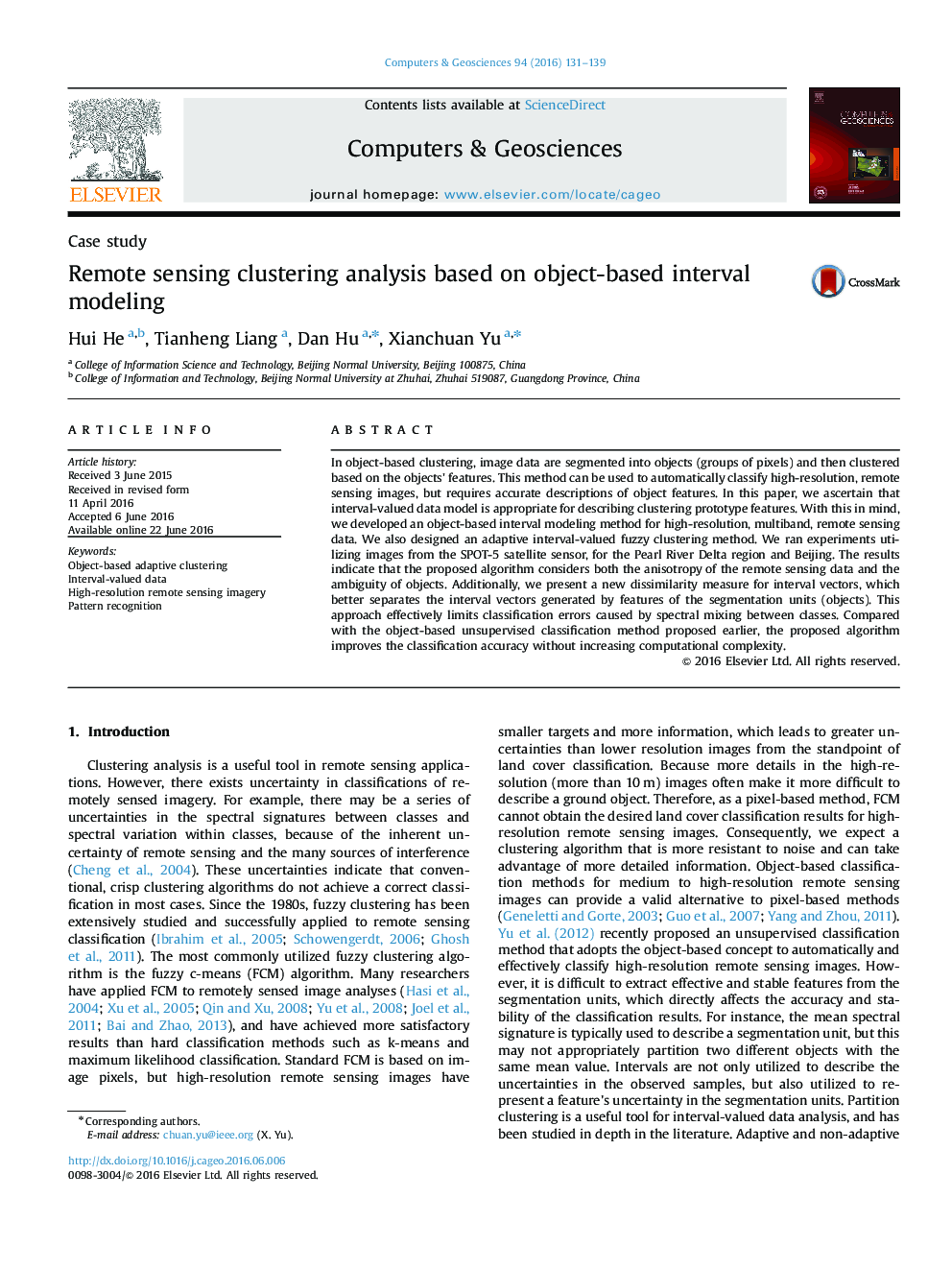| کد مقاله | کد نشریه | سال انتشار | مقاله انگلیسی | نسخه تمام متن |
|---|---|---|---|---|
| 507002 | 865085 | 2016 | 9 صفحه PDF | دانلود رایگان |
• Accurate descriptions of object features are important in object-based clustering.
• The interval-valued data model describes the object-based clustering prototype features more appropriately.
• Increasing separability between classes will increase the classification accuracy.
• Novel object-based adaptive interval-valued fuzzy clustering method makes higher flexibility and efficiency.
• Applied to high-resolution, multiband, remote sensing data for land cover classification, can also be applied in wider areas.
In object-based clustering, image data are segmented into objects (groups of pixels) and then clustered based on the objects' features. This method can be used to automatically classify high-resolution, remote sensing images, but requires accurate descriptions of object features. In this paper, we ascertain that interval-valued data model is appropriate for describing clustering prototype features. With this in mind, we developed an object-based interval modeling method for high-resolution, multiband, remote sensing data. We also designed an adaptive interval-valued fuzzy clustering method. We ran experiments utilizing images from the SPOT-5 satellite sensor, for the Pearl River Delta region and Beijing. The results indicate that the proposed algorithm considers both the anisotropy of the remote sensing data and the ambiguity of objects. Additionally, we present a new dissimilarity measure for interval vectors, which better separates the interval vectors generated by features of the segmentation units (objects). This approach effectively limits classification errors caused by spectral mixing between classes. Compared with the object-based unsupervised classification method proposed earlier, the proposed algorithm improves the classification accuracy without increasing computational complexity.
Journal: Computers & Geosciences - Volume 94, September 2016, Pages 131–139
